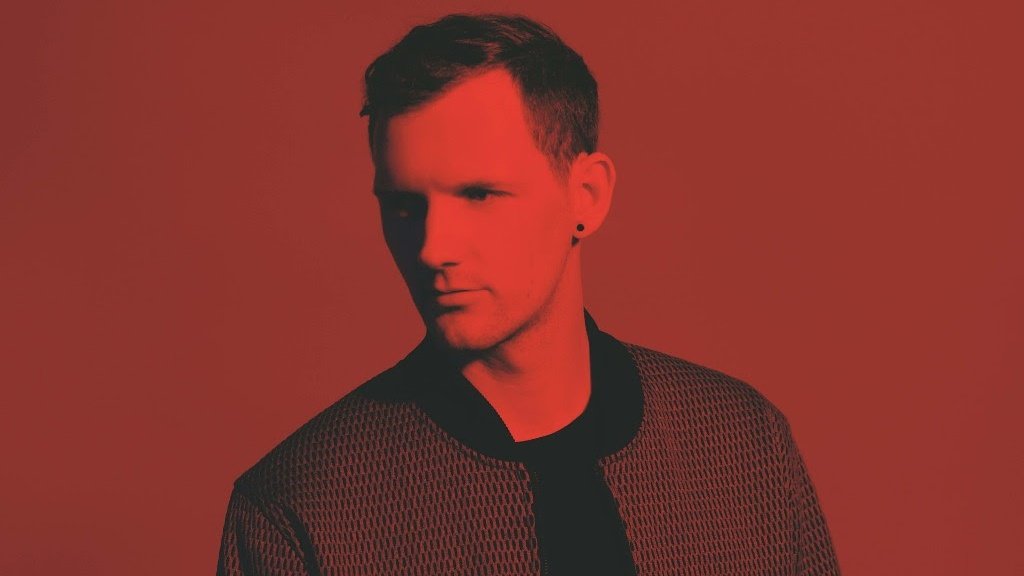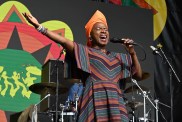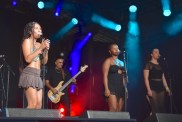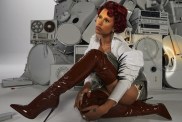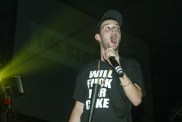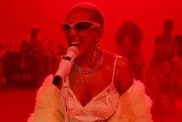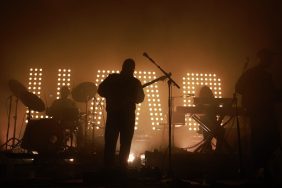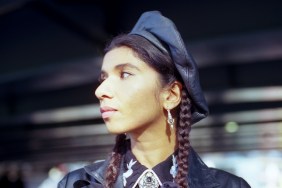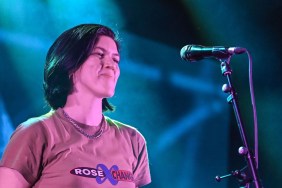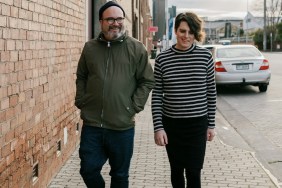Danny Harley is a vocalist, multi-instrumentalist and gun producer, so it’s no surprise that his self-titled debut album as The Kite String Tangle has catapulted him back into the spotlight this year. For such an accomplished musician, it was almost inevitable that his first LP was going to be good.
Harley has been partly removed from the scene for a few years; while he worked on his first long-form work and also founded Exist. Recordings, in collaboration with UNIFY. He’s also spent a good chunk of time developing his new live show, having expanded his already-electrifying one-man show into more of a band vibe – bringing on extra musicians to bring more depth to his sound, and also allowing him to rely less on a laptop and cued sounds.
We caught up with Harley the day after he’d kicked off his support tour behind Canadian giants ODESZA.
Music Feeds: For starters how was the first ODESZA show last night? Were there plenty of people there for you and how’d they enjoy your set?
Danny Harley: Yeah man it was unreal, it was insane. It’s such a beautiful venue; the town hall theatre in the middle of Auckland. It was a full house and ODESZA played amazingly. I’ve wanted to see their set for so long; it was really good to see them. It was probably about 80% full during our set; a really good reaction for the first time we’ve been to play in New Zealand. Stoked to have been there and to have got that opportunity for the first time.
MF: Are you using these support shows, and the forthcoming set at Brisbane festival – to see what works with all your new material live, or is this pretty much the set people can expect on your headline tour next month?
DH: Being a support set it’ll always be a bit shorter and you’ll have to scale back production a bit. So it is a bit of testing out material. I’m getting to play songs from the album that I haven’t gotten the chance to play since the album is been out, so that’s really interesting to see what people think of it. To gauge reactions and road test it, so to speak, for the headline tour. It’s a little bit of a different show; there will be a bit more of a headline aspect when I go on my own tour for the following months.
MF: How was it for you having to sit down and actually pick and choose songs from your catalogue now that you’ve got so much to choose from?
DH: Yeah I’ve definitely got a lot more to choose from since the album came out. With only an EP out you have to make six songs last the whole hour set, but now I’ve got a lot more to select from. You just have to pick the tracks that you think will work best, and you can try and cater the shows to the situation a bit more which is cool. It’s always a really fun part of the process for me; making the songs translate live.
MF: Your Splendour set a couple of months back was an awesome return to big stages for you, and plenty of praise came in for your new live show and visuals. How involved have you been in putting together all the superlative aspects of the show on top of the actual music itself?
DH: I get pretty involved in that stuff. Usually, I just find somebody I really like to work with. I have a lighting director who has been with me since the very start, he’s been doing my lights for three or four years and he’s a genius and an artist in his own right. Then [it’s] finding someone to do the visuals to create something custom; I’ll find someone that I like and we’ll go back and forth. I’ll send them a heap of references to bands that I’ve seen and shows that I’ve really liked, and even just visual references. So yeah, I definitely get pretty involved, and that’s a really fun part for me. Dipping your toes in another art form to take yourself away from the actual music for a little while, and the two mediums complement each other really well.
MF: What do you enjoy about playing on festival stages like Splendour and Brisbane Festival as opposed to smaller gig venues?
DH: They’re two different beasts really. You connect with an audience more in a smaller, intimate show setting I think. But when you’re with someone else’s audience or a festival crowd there’s a different energy and you’re playing to people who might not necessarily be familiar with your music. So you have to put your best foot forward and showcase what you think might resonate with people best. It’s a different vibe but they’re both amazing in their own right, but in different ways. With a festival crowd, it’s a more of a fun, up-for-it kind of time, whereas you can be a bit more indulgent in your own headline shows because people are familiar with your material.
MF: From when Vessel was released three years ago how has your time been split? All the stuff with getting Exist. Recordings up and running must have been time-consuming?
DH: It’ been a bunch of different things. Exist has been in the works – obviously, we only launched it at the start of this year but it had been in the works for a year and a bit before that. Then also the album, I had been writing it and mixing it and doing all the various elements for two or three years, alongside the occasional tour. It definitely took longer than expected to get this album to where it needed to be. It was a lot of learning, it was a debut record and I put a lot of pressure on myself to make something I was really proud of and something honest. Then even once it was finished to get all my ducks in a row and to get it mixed, then to get the artwork, that all dragged out as well. So there were a lot of learning curves, and it’s been a long two or three years for me. It’s very relieving
to have it out.
MF: What was the biggest challenge you found that came with writing and recording a long piece of work and something that made sense as a longer form body of music?
DH: I think that just finding the cohesion and finding your sound, finding the thing that keeps it all together. For me, I find I’m a pretty eclectic writer. I’ll write some really mellow, raw stuff and then some instrumental electronic stuff, and everything in between. So it can be confusing to try to find that perfect middle ground that represents The Kite String Tangle. So that was the most confusing bit for me and obviously, that changes over time as well, just to add another element.
MF: The melodic and thematic development in so many of the songs on the album is achieved by manipulating texture and playing with the layers of sound in the track. Why do you think this has become a big part of your music, as opposed to, for argument’s sake, the standard conventional structure of a pop or electronic song that we see a lot.
DH: I think again it has to do with how much time I spent with it; tinkering with things. I had time to try pretty much everything I wanted, playing with layers and different parts of one specific layer that I would bring in and bring out. Or I would not record and not record, or use and then not use. It’s been a real journey in that regard and I’ve always gravitated towards really dense productions as well, I don’t know why. So there always seems to be a lot going on, making use of the full frequency spectrum at most times.
MF: How do you even begin to sit down and decide which layers of the songs you’re going to perform live, which you’re going to loop and which you’re going to just cue when you’re performing?
DH: It works on a case by case basis, but having done a bunch of touring off the back of the EP it made it a bit simpler because I had my processes. I knew what worked for me and what didn’t. I’ve extended it to a three-piece band now, so that makes things a little easier. Rather than just relying on a one-person show. Even at Splendour, I had a horn section as well which was really cool. It’s about trying to get as much out of the laptop as possible, but I also try to prioritise the visual elements of sound as something is played. So I like to trigger stuff with drumsticks and pads; with very large movements because I feel like that’s more interesting to watch and more engaging.
MF: How do you see The Kite String Tangle project and your live show developing in future years?
DH: I think it will change depending on the music that I’m writing. I might not always release albums, with the format becoming a bit less relevant. I still like the idea of a body of work and touring that body of work so I guess, depending on the music I put out, finding the live show that fits that music best. Hopefully, that will change quite a lot, there’ll be some stuff I can strip back completely solo and maybe bring in some strings at some point. Then maybe a huge band the next time, I want to be able to keep people guessing and keep things interesting.
–
The Kite String Tangle plays Brisbane Festival this weekend alongside London Grammar, James Vincent McMorrow, Mansionair and Wafia. His national album tour kicks off next Friday, 6th October in Adelaide. Details here.
